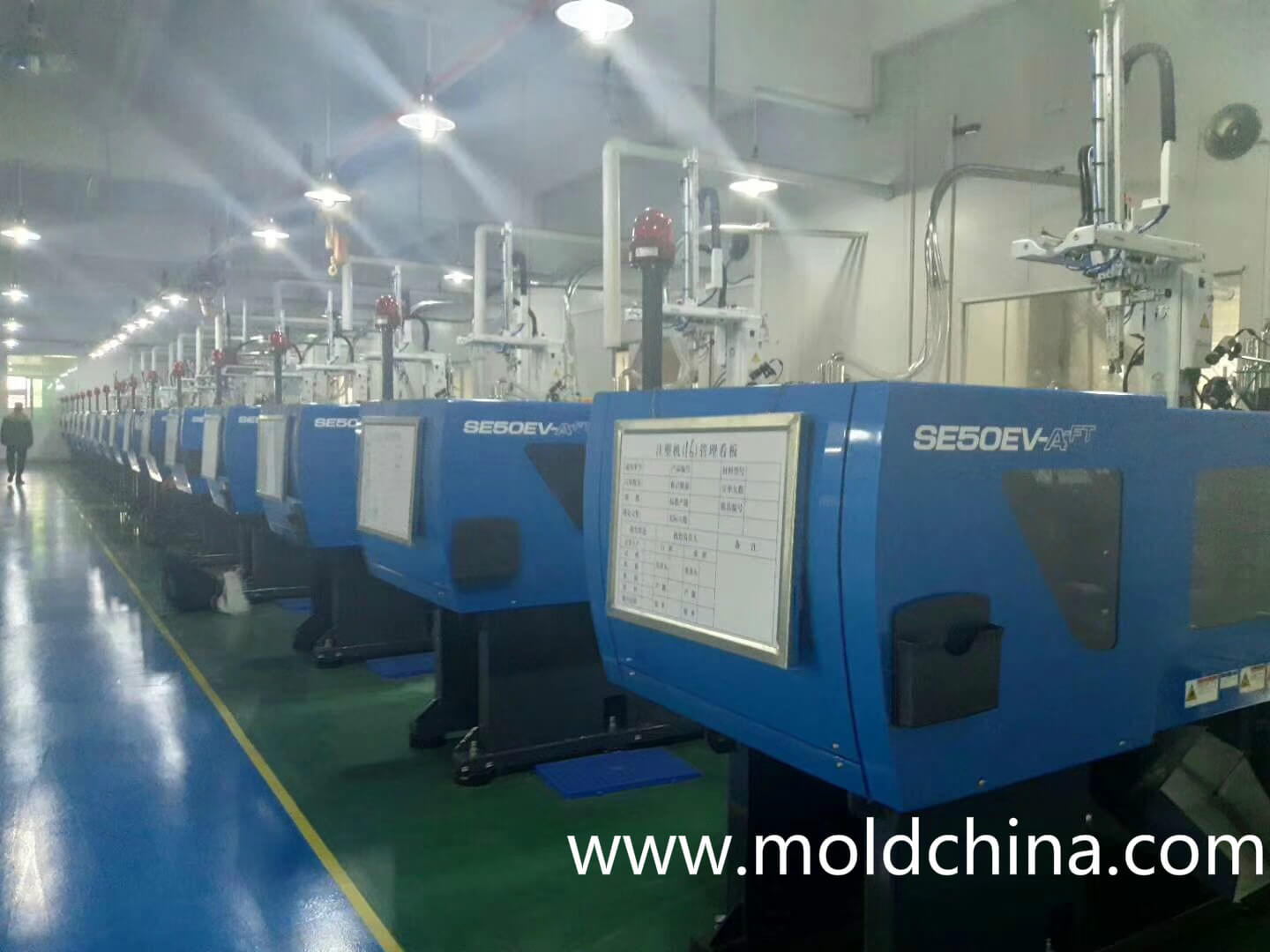1.A great habit of injection molding machine operation is of enormous benefit to both machine service life, as well as production safety.
(1)Before the Machine Starts
①Check to see whether there is any water or oil inside the electrical control box. Don’t turn it on if the machine is affected by moisture. It can only be turned on after the parts are dried by the service staff.
②Check whether the voltage meets the requirements, which is usually kept within the range of ±15%.
③Check the effectiveness of the EMERGENCY STOP button, as well as switch of the front and back safety doors. Verify whether the rotating direction of the electric motor and the oil pump are consistent.
④Check to see whether each cooling channel is smooth and free from any blockage, and let coolant into the oil cooler and the water jacket at the machine barrel end.
⑤Check to see if all joints are lubricated, and add lubricant/grease when necessary.
⑥Turn on the electric heat control system to heat each section of the machine barrel. Hold the temperature for a while after each section is heated up to the required temperature, so as to obtain a relatively stable machine temperature. Temperature holding time varies with different equipment and plastic materials.
⑦Feed sufficient plastic materials into the hopper. According to different plastic injection molding requirements, some materials need to be dried beforehand.
⑧Keep the machine barrel covered with a heat shield, so as to save power, and at the same time increase the service life of the electric heater and the contactor.
(2)During the Operation Process
①Do not ignore the importance of the safety doors for convenience.
②Always pay attention to the temperature of the hydraulic oil, to keep it within the allowed range. The ideal working temperature of the hydraulic oil should be kept between 45 and 50℃; usually, the proper temperature ranges from 35 to 60℃.
③Don‘t forget to adjust each travel distance limit switch, to avoid collision during machine operation.
(3)After the Operation
①Before turn the machine off, thoroughly clean the machine barrel, so as to prevent the residue materials from oxidation or decomposition caused by long-time heating.
②Open the mold to keep the elbow-bar mechanism locked.
③The workshop needs to hoist all the equipment. Carefully handle the heavy mold parts and components during the assembly/disassembly process, to ensure production safety.
-
Instructions on Injection Molding Machine Debugging
(1) Purpose
Meet product quality requirement with the fastest speed, the lowest cost and the optimal molding cycle.
(2) Scope of Application
Applicable for machine debugging and work process adjustment of the Injection Molding Dept.
(3)Work Preparation
①No matter it is a new or an old product, production process documents, product samples, material performance documents, as well as the documents of product weight and mold structure need to be available. As for an old product, find out its production process document and input it to a computer, and then adjust the mold and equipment to the required status.
②Check whether the status of equipment, mold and material allows debugging, e.g. whether materials are dried, whether the mold is cleansed and functions well, whether barrel temperature reaches the molding requirements, and whether the cooling system is on, etc.
(4)Machine Debugging
For an old product, input process parameters before performing regular operation, and start massive production after quality inspection. If it is a new product, the operation steps are as follows:
①Set material barrel temperature to regular molding temperature. Set melt and injection travel distance on basis of product weight.
②Identify injection pressure and speed based on the injection molding process. Usually, medium pressure (50~80MPa) and speed (30~60mm/s) are applied.
③Identify pressure holding time based on gate types and sizes. Pinpoint gate, 6 – 8s; side gate and direct gate, 8 – 10s.
④Identify cooling time based on cooling channel layout and product thickness, preliminarily set it to 15 – 20s.
⑤Start the injection molding process manually; raise or lower relevant data based on the defects of the molded product, till product quality meets the requirements and allows continuous operation.
⑥Switch the machine from manual mode to semi-automatic and adjust the parameters during production, so as to achieve the best injection molding cycle. Injection Molding Cycle = mold open/close time + injection time + melting time + cooling time, all of which need to be minimized. Generally speaking, for a 100g injection molding machine, if a 2-plate mold is applied, the mold open/close time is kept at about 2s, or appropriately longer if there are sliders. Injection time should be reduced progressively by 0.5s till defects occur. Then stop adjustment and return to the previous data. With regard to melting time, try to reduce back pressure and quicken up melting speed, to avoid air mixture and air bubbles, etc. The adjustment of cooling time is similar to that of injection time: reduce progressively by 1s, and then compare the molded product with the standard sample. If the two share the same quality, it is deemed the best cooling time.
All copyright reserved by injection molding company Sositar Mould
